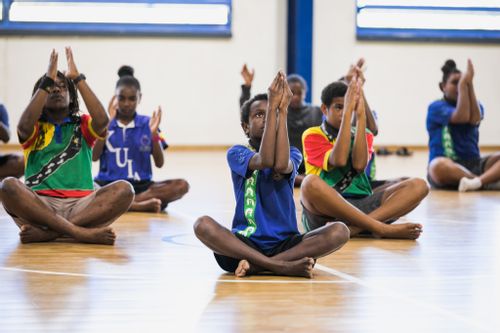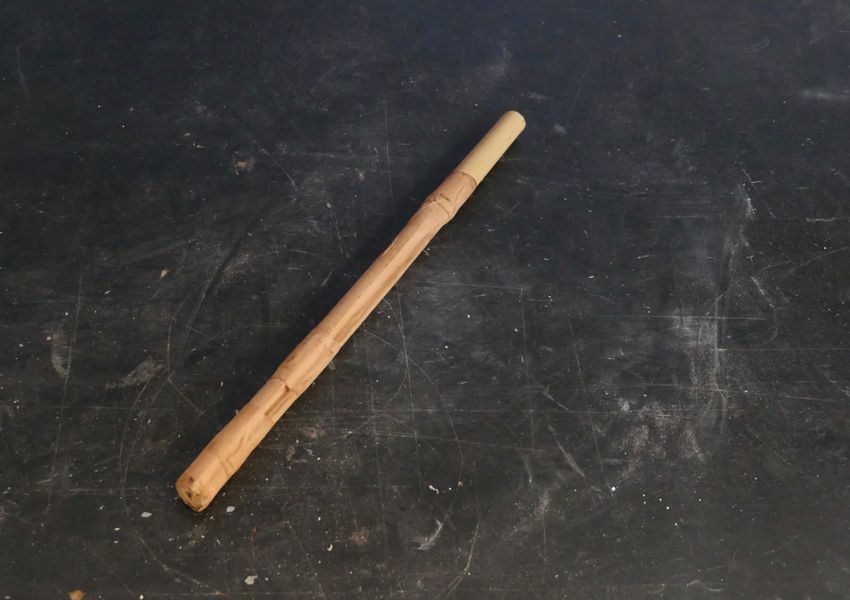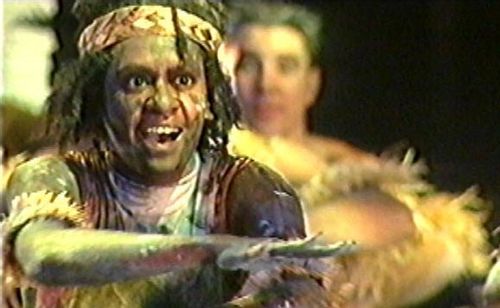
Through the eyes of Peggy Misi, Cultural Consultant and former Bangarra Dance Artist, we take a look at how children's play dances help pass knowledge and culture on to the next generation, in a fun-filled way.
I grew up on Mabuyag Island in the Western Torres Strait Islands and come from a strong family line of dancers and singers. My brothers used to sit and compose songs and choreograph dances. There’d be my mum and dad dancing and my brothers and sisters but I was young so I couldn’t join at the time. So, as a child growing up, sitting with them and listening and watching them dance, I wanted to do ‘that’!
My brother Scottie is the composer and choreographer of most of the songs in my family. He created this ‘sit down' dance called Yaruka Manu e. He worked at Turtle Head Island on the Escape River, where they used to do pearling with the Japanese people. He picked up their language, here and there, and returned to Mabuiag and taught me and my little brother the sit down dance with the song, including some Japanese language. It was a fun, happy dance and I still remember it perfectly. I remember all my brother’s songs and dances. And now I’m passing that knowledge down to my nephews so they know the dances and can carry that on, into the future.

Traditionally, we’re taught sit down dances first because they are easier, before progressing on to the ‘stand up' dances but it depends – some children around 3 years old will join in when the adults are dancing and get straight into these more complex dances, they know that this is their culture. The children’s dances are fun and playful and they always tell a story both with language and movement. Being done on the spot, they are also contained and focused which can be great for maintaining the attention of little ones, and we sit on their level to teach them which really engages them. They also help teach the children about our instruments. In these songs, we often use the Warup, Tharam and Kulaps. Usually, they can be taught to anyone, depending on the protocols set by the composer and choreographer.




After creating dances with Elma Kris for the 2000 Olympics Opening Ceremony, including a sit down dance, Stephen invited me to co-create Turtle for Bangarra’s production Corroboree (2001). With sit down dances, you usually sit on the spot in babuk (crossed legged). You do the movements with your upper body, your hands, your fingers, your head… but this dance I created for Turtle, named Kasa Kab (play dance) was a little different. It was choreographed to be like the little turtles waddling down to the water after hatching from their eggs. The zig zag from the top of the stage coming down stage, that’s like the little turtles coming down and into the water before getting to the deep water. I created motifs of gently holding the baby turtles, of their flippers swimming and of letting them go into the water. These simple yet powerful gestures are a part of the story telling and sit with the words of the song.

WATCH REKINDLING 2018 STUDENTS FROM CHARLEVILLE PERFORM KASA KAB (PLAY DANCE)
Listen to Kasa Kab from Turtle - Corroboree

Every island throughout the Torres Strait has their own sit down songs and dances. Nowadays, island life is a blend of both traditional and contemporary cultures and these songs and dances draw from this. These children’s dance stories range from daily practices such as fishing, collecting shells and playing on the beach to the bigger understandings in life like saying goodbye to loved ones. These songs and dances are a great way to help children grow and process their understandings of our cultures and the world.

"I’m passing that knowledge down ... so they know the dances and can carry that on, into the future."
Interview with Peggy Misi
Article by Yolande Brown
-
Cultural Consultant
Peggy Misi
-
Cultural Consultant